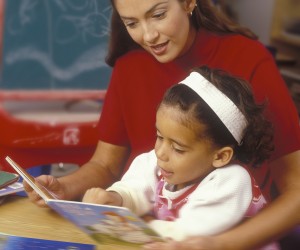I’m often amazed at how my six-year-old son is learning how to read and write. While all the traditional tools—books, pens and papers—are available to him, it’s technology that really brings the subject matter to life.
The rich, interactive media offered by e-books, tablet computers and smartphones not only teach him literacy skills but also provide visual and auditory stimulation, which has encouraged his reading and made it more interesting.
With International Literacy Day at the end of last year, we’ve once again come to realise that we cannot speak about literacy without also speaking about technology. When discussing literacy, we used to only talk about reading, writing, listening and speaking skills. But in order to survive in today’s digitised world, pupils also need information, technology and media skills.
Literacy is a challenge in South Africa. A recent study found that, by the time many South African pupils reach Grade 4, they are functionally illiterate because they do very little or no reading in Grades 1 to 3. By the time they reach Grade 5, 13% of pupils are considered illiterate and are unable to score more than four out of 20 on a comprehension exercise. And when they reach university, only one-third of pupils could be regarded as ready to cope with the typical reading, writing and reasoning demands they’ll face in tertiary study programmes.
Start with the teachers
Technology can help. Teachers need to be provided with the tools and skills that will help them to teach effectively. Having word processors and e-books in the classroom is one thing, but teachers need to be equipped so that they can make teaching more interesting, both for themselves and the pupils.
An example of such a project was the Western Cape Education Department’s Khanya Project, which between 2001 and 2012 fitted more than 1 400 schools with smart education technology, providing more than 968 000 pupils and teachers from disadvantaged areas with a sound technology foundation. The project prioritised teacher training and provided ongoing teacher support post-implementation until its goal was reached in 2012.
At the other end of the scale, inadequate teacher and pupil training was cited as one of the reasons for the failure of the Gauteng Online project, which aimed to establish computer labs at all public schools. Many of the labs sat idle because pupils and teachers simply did not know how to use the equipment, while poor ongoing support and maintenance also plagued the project.
Tech in primary schools
Word processors have been used in classrooms for years. At the primary school level, word processors help to improve children’s writing by drawing attention to grammar and spelling errors, resulting in better quality assignments.
Technology can make subjects like mathematics a lot more exciting and interesting for pupils. Rather than using flashcards to get pupils to memorise their times tables, teachers can use gamification to encourage learning through play. Pupils start to really enjoy learning because it’s fun and interactive.
The same is true for reading. In the traditional classroom setting, children would learn to pronounce and spell words by breaking them up into phonetic units. This was not always effective because pupils would still struggle to put all the parts together to correctly pronounce a word.
When learning how to read on a tablet, for example, pupils are able to select a word they’re not familiar with and have a voice correctly pronounce and define the word, also in an engaging and stimulating way. This improves not only their reading skills but also their speaking and pronunciation skills.
Tech in secondary schools
Technology takes learning to another level in secondary school. It allows for collaboration and encourages pupils to interact with each other and share whatever it is they’re working on. By collaborating on assignments, pupils can learn from each other and improve in groups. Assignment content is also vastly improved when students have access to the Internet and can research a topic to better understand it.
Levelled playing field for children with special needs
Technology provides equal learning opportunities to pupils who have learning-related challenges such as autism and hearing difficulties. Cisco, in partnership with Deaf Aid, has developed sign language for IT terminology so that children and adults who are hard of hearing can become computer technicians. Sign language is currently being taught in three academies in Africa.
Public-private partnerships
Equipping teachers with the skills they need so that they are comfortable using technology in the classroom is a massive task. This is why Cisco has partnered with the Department of Basic Education and Vodacom to equip teacher resource centres with Cisco’s Networking Academy programme across South Africa.
We have also established 36 Community Knowledge Centres in underserved communities where pupils who have failed or dropped out of school can go to learn basic IT skills.
Literacy and technology can no longer be separated; they work hand in hand and together have brought about a revolution in learning. Ensuring that teachers and pupils know how to use educational technology, and that they can troubleshoot problems when something minor goes wrong, will help to ensure the success of school literacy projects.
Alfie Hamid






